Norway Research
In This Document:
Summary
Concentrations of CFC-11 and CFC-12, as well as tritium and helium isotopes were measured in the super-anoxic, sub-surface waters of Framvaren Fjord in Norway to assess the stability of CFCs in reducing environments. This fjord provides an ideal environment to study the degradation of CFCs because of its relatively simple dynamics and the narrow zone in which chemical reactions and biological activity, relevant to CFC degradation, occur in the water column. CFCs and tritium enter the fjord at the surface and are transported into the deep water primarily by turbulent vertical mixing. The turbulent vertical mixing rate was determined by fitting a 1-D model to the vertical distributions of [3H] and [3H]+[3Hetrit], and found to be 0.006-0.008 cm2 sec-1. Using these values, the degradation rates for CFC-11 and CFC-12 were obtained by comparing model simulations incorporating first-order degradation rates to the observed CFC profiles. CFC-11 is degraded at a rate of 6-9 yr-1 below 19 meters depth where oxygen concentrations are zero. CFC-12 is found to have a maximum degradation rate of 0.01 to 0.03 yr-1.
Investigators:
Stephanie Dunkle Shapiro(Lamont-Doherty Earth Observatory of Columbia University, Palisades, New York, Department of Earth and Environmental Sciences, Columbia University, New York), Peter Schlosser (Lamont-Doherty Earth Observatory of Columbia University, Palisades, New York, Department of Earth and Environmental Sciences, Columbia University, New York) William M. Smethie Jr. (Lamont-Doherty Earth Observatory of Columbia University, Palisades, New York), and Martin Stute (Lamont-Doherty Earth Observatory of Columbia University, Palisades, New York, Department of Environmental Science, Barnard College, New York)
Publications:
Shapiro, S.D., 1998, Evaluation of the 3H-3He Dating Technique in Complex Hydrologic Environments: Ph.D. Dissertation, 254 p., Department of Earth and Environmental Science, Columbia University in the City of New York.
Shapiro, S.D., P. Schlosser, W.M. Smethie Jr., and M. Stute, 1997, The Use of 3H and Tritiogenic 3He to Determine CFC Degradation and Vertical Mixing Rates in Framvaren Fjord, Norway: Marine Chemistry, v.59, pp.141-157.
Illustrations:
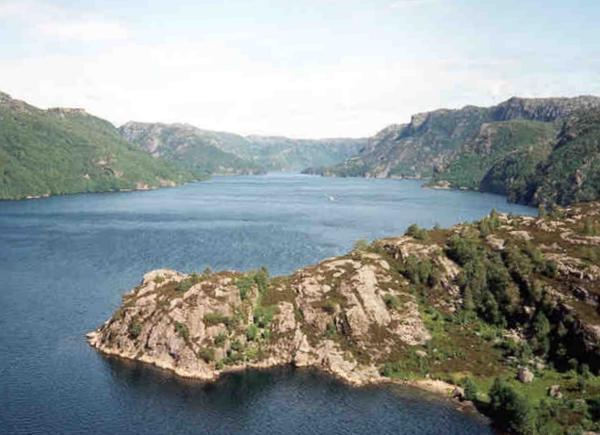
Framvaren Fjord, Norway
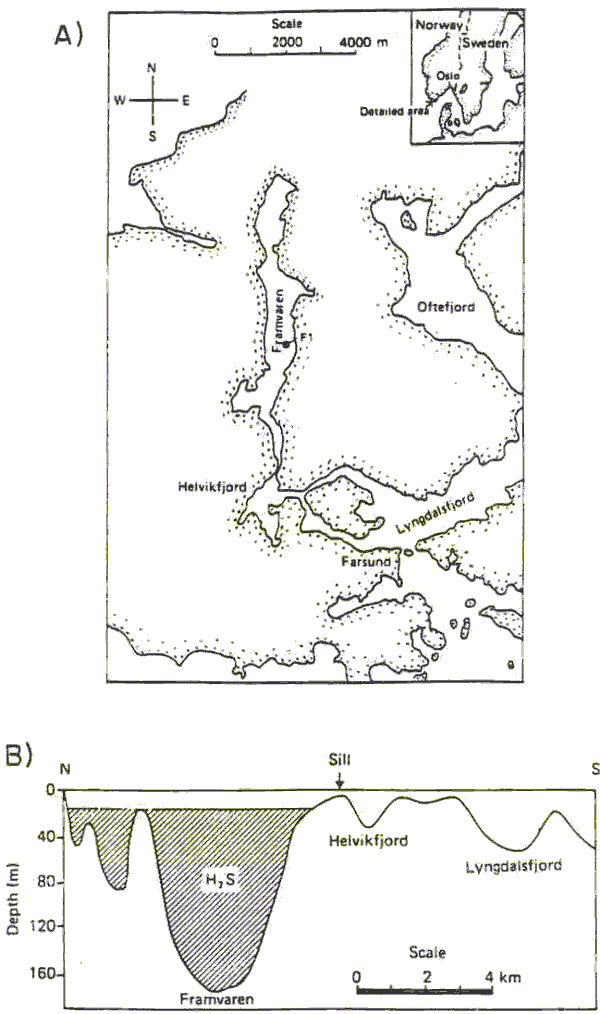
(a) Location of the study area and station F1 (adapted from Skei, 1988); b) Cross section of Framvaren Fjord, Helvikfjord, and Lyngdalsfjord (Skei, 1988) showing the location of the sill, near which additional samples were taken.
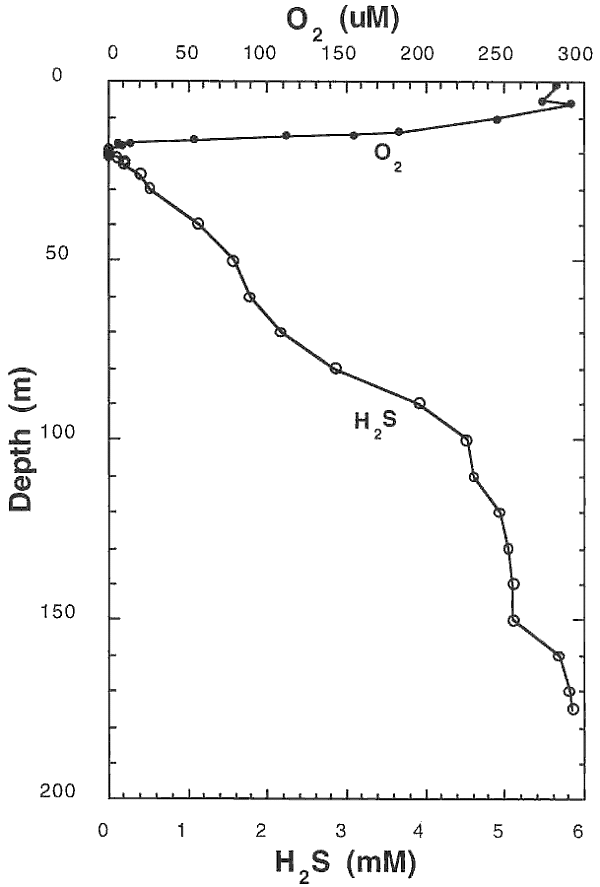
Depth profiles of oxygen and hydrogen sulfide concentrations from station F1 in Framvaren Fjord (adapted from Yao and Millero, 1995).
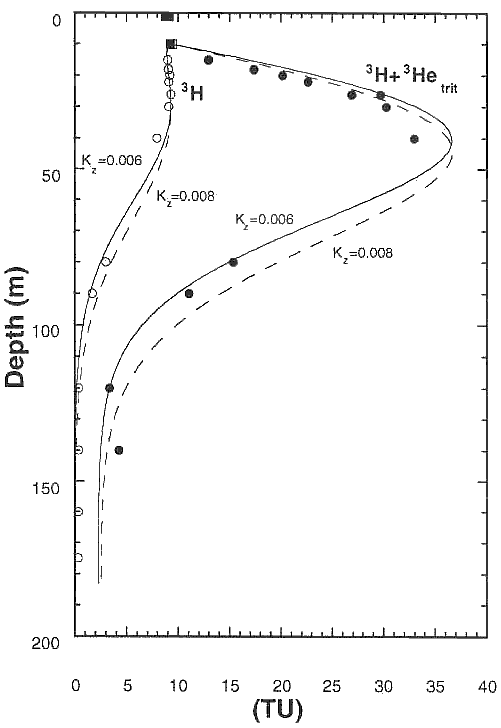
Comparison of [3H] and [3H]+[3Hetrit] with model simulations assuming a vertical exchange coefficient (Kz) of 0.006 and 0.008 cm2 sec-1.
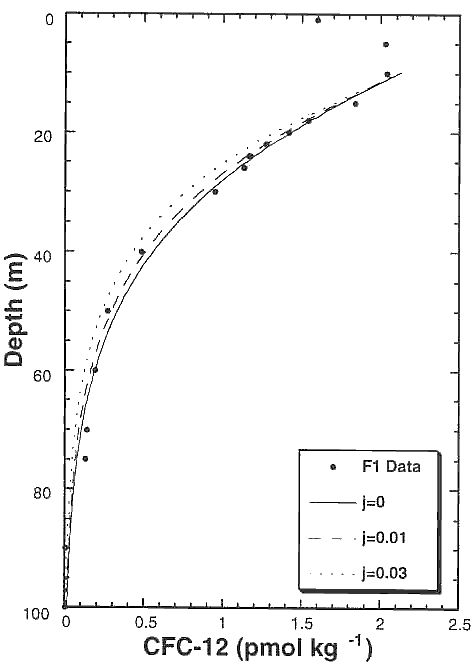
Comparison of CFC-12 data with model simulations assuming a vertical exchange coefficient of 0.008 cm2 sec-1 and degradation rates (j) of 0, 0.01 and 0.03 yr-1 at depths below 19 meters.
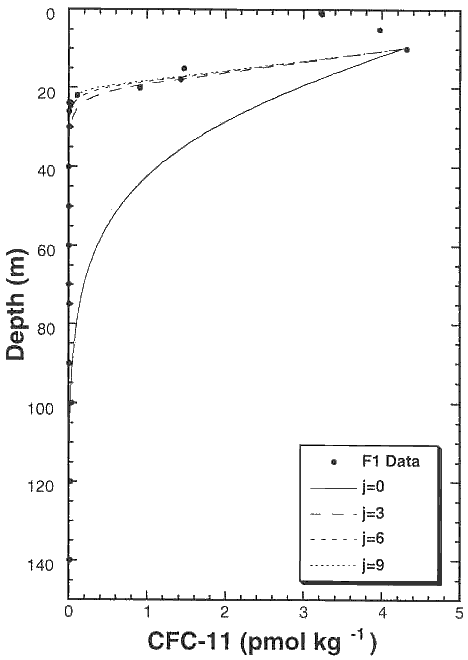
Comparison of CFC-11 data with model simulations assuming a vertical exchange coefficient of 0.008 cm2 sec-1 and degradation rates (j) of 0, 3, 6, and 9 yr-1 at depths below 19 meters.